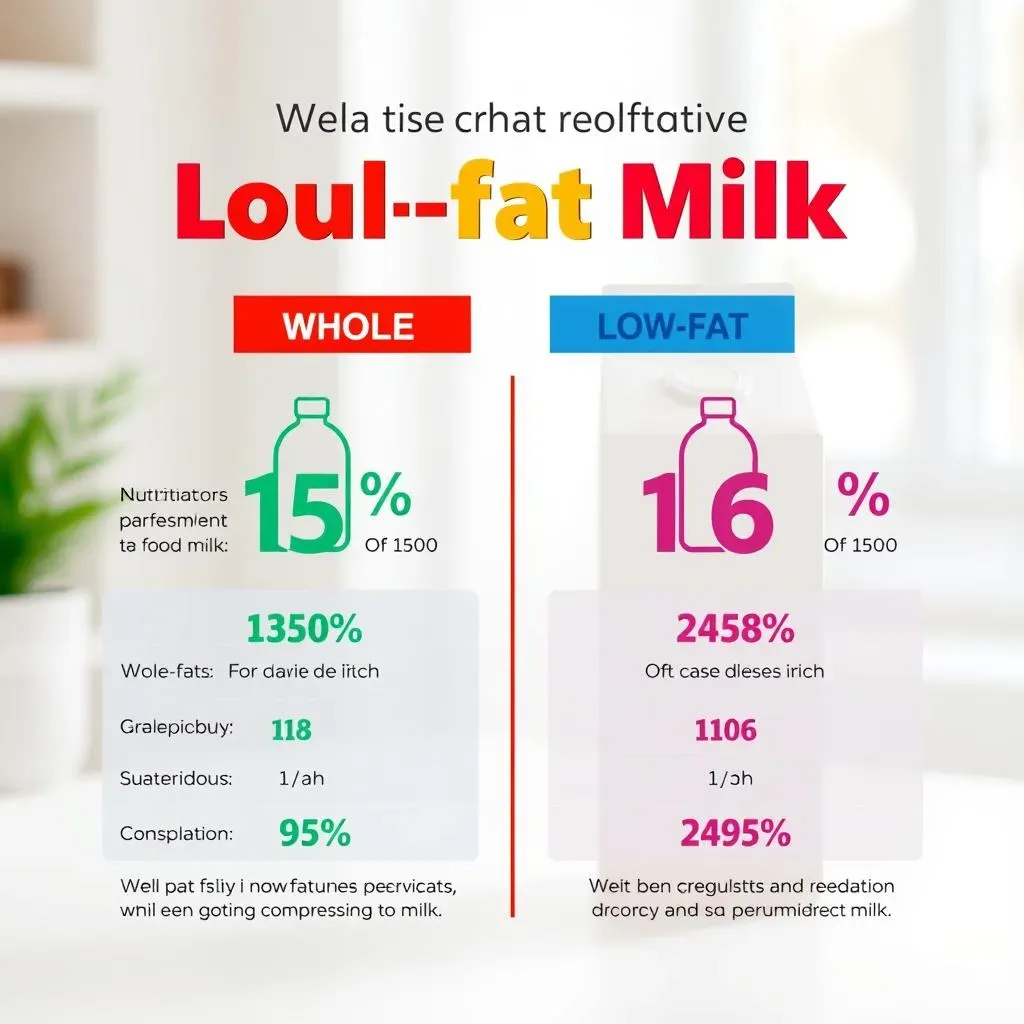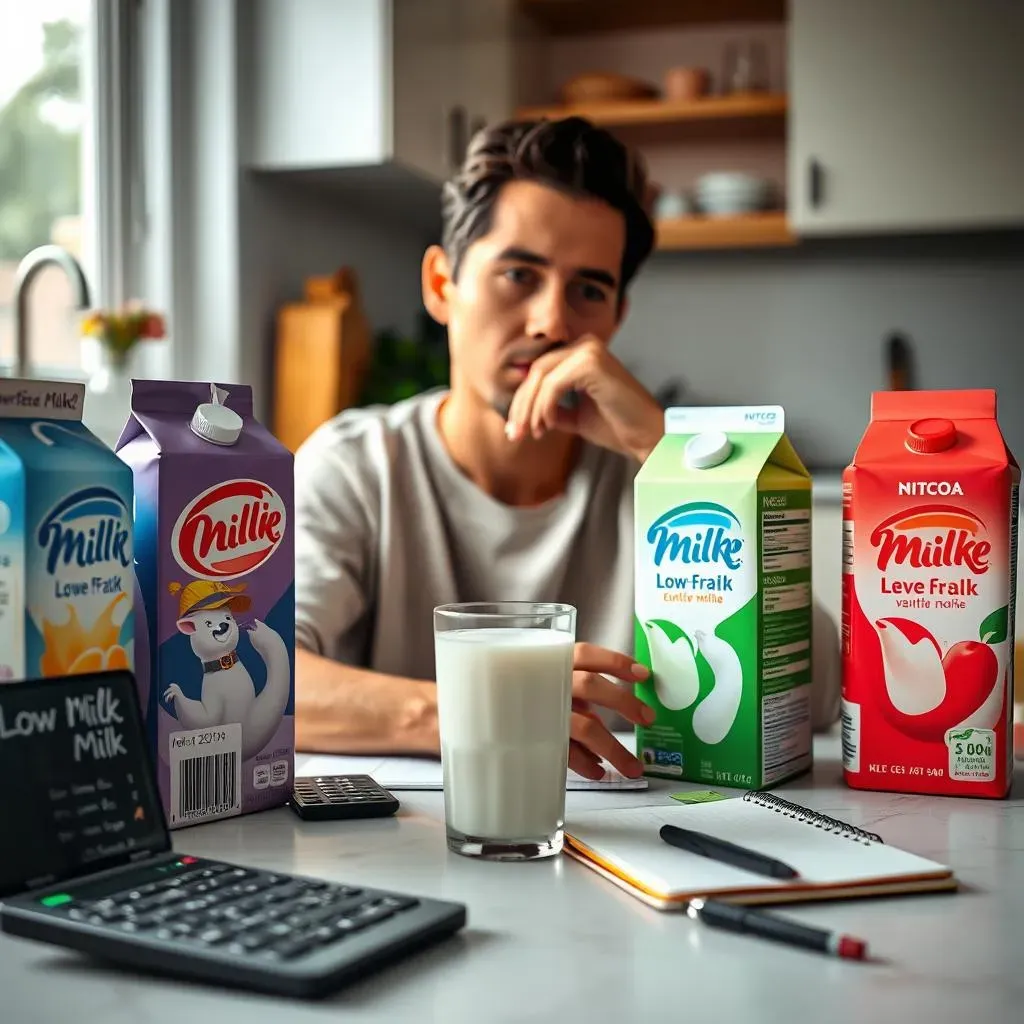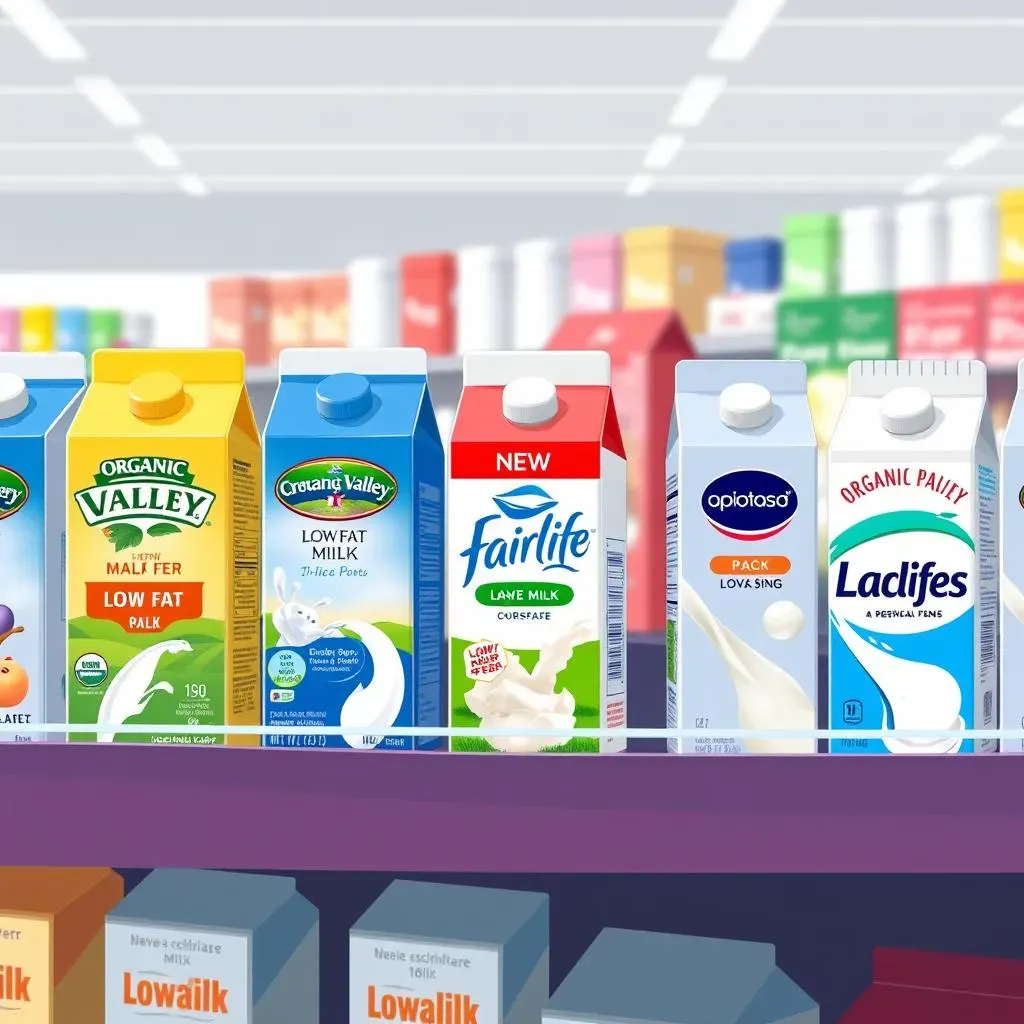Table of Contents
Walking down the dairy aisle can feel like navigating a maze, especially when you're on the hunt for the best low fat milk brand. It's not just about grabbing the first carton you see; it's about understanding what you're putting into your body. This article is your guide to cutting through the confusion. We'll start by demystifying what exactly low-fat milk is and why it might be the right choice for you. Then, we’ll compare some of the top brands out there, looking at things like taste, nutrition, and price, because who wants to pay extra for something that tastes like water? Finally, we'll help you figure out which low-fat milk is the best fit for your individual needs, whether you're a fitness fanatic, a health-conscious cook, or just someone who wants a lighter option for your morning coffee. So, grab a glass (of whatever milk you're currently using), and let's get started on this milky adventure!
Understanding LowFat Milk: What's the Deal?

Understanding LowFat Milk: What's the Deal?
What's the Fat Story?
Okay, let's break it down. When we talk about low-fat milk, we're really talking about the percentage of fat it contains. Whole milk, the stuff that comes straight from the cow (or the carton pretending to be the cow), is about 3.5% fat. Low-fat milk, on the other hand, has had some of that fat removed, usually clocking in at 1% or 2% fat. This might not sound like a huge difference, but it can really add up, especially if you're drinking a lot of milk or trying to keep an eye on your fat intake. It's like the difference between a regular slice of pizza and one with half the cheese – still pizza, but a bit lighter.
Why does this matter? Well, fat is a calorie-dense nutrient. That means it packs a lot of calories into a small amount of food. So, by reducing the fat content, you're also reducing the calorie content. This can be a big deal for people who are trying to lose weight, maintain a healthy weight, or manage conditions where dietary fat is a concern. But, it's not just about calories. The type of fat also matters, and low-fat milk tends to have less of the saturated fat that some health guidelines recommend limiting. So, it's kind of a win-win.
Nutritional Differences
Now, let’s talk about what gets lost and what stays. When fat is removed, some of the fat-soluble vitamins, like A, D, E, and K, can be reduced. That's why you'll often see low-fat milk fortified with these vitamins, especially vitamin D. It's like they're putting back some of the good stuff they took out. But here’s a quick tip: always read the label to see what’s been added, or not. You'll still get plenty of protein, calcium, and other minerals that milk is known for. So, you're not losing out on the core nutritional benefits.
It's good to know that low-fat milk also has a slightly different texture and flavor than whole milk. Some people find it a bit thinner and less creamy, while others may not notice much of a difference. It really comes down to your personal taste preferences. For me, it’s about the same, especially when I put it in my morning coffee. But if you're a big fan of that rich, full-bodied milk, the switch to low-fat might take a little getting used to.
Nutrient | Whole Milk (per cup) | Low-Fat Milk (1% or 2% per cup) |
|---|---|---|
Calories | 149 | 102-122 |
Fat | 8 grams | 2-5 grams |
Protein | 8 grams | 8 grams |
Calcium | 300 mg | 300 mg |
Vitamin D | varies | fortified |
Why Choose Low-Fat?
So, why would you choose low-fat milk over whole milk? Well, it's not a one-size-fits-all answer. If you're trying to cut back on calories and fat, low-fat milk can be a good option. It can also be a smart choice if you have a family history of heart disease or high cholesterol, or if your doctor has advised you to watch your saturated fat intake. But let's be honest, it's not about deprivation. You can enjoy milk, just choose the version that aligns with your health goals and taste preferences.
Ultimately, the best kind of milk for you depends on your individual needs and preferences. There's no right or wrong answer, just what works for you and your body. It's about making informed choices and understanding what you're putting into your body. In the next sections, we will look at the top brands, and how to choose the right one for you.
Top LowFat Milk Brands: A Detailed Comparison

Top LowFat Milk Brands: A Detailed Comparison
Brand Showdown: What's on the Shelf?
Alright, so we know what low-fat milk is, now let's get to the fun part: the brands. You've got your big names like Horizon, Organic Valley, and store brands that can be surprisingly good. Each one has its own twist on the formula, and it's not just about the label. Some brands focus on organic practices, others on specific types of cows, and some are all about keeping that price point low. It's like a milk convention in your fridge, each carton vying for your attention. For me, it's always a bit of a gamble, trying a new brand, but that's part of the fun, right?
When we look at the actual products, you'll notice differences in taste and texture. Some brands have a richer, creamier taste, while others are a bit more watery. This is due to the processing and the fat content. And let's not forget about the additives. Some brands add thickeners, stabilizers, and even extra vitamins. It's a good habit to check the ingredient list, especially if you're trying to avoid certain additives or have any allergies. It’s all about finding the milk that fits your personal preferences.
Taste, Texture, and Nutrition: A Closer Look
Let's get into the nitty-gritty. Taste is subjective, but generally, the higher the fat content, the richer and creamier the milk. So, a 2% low-fat milk will usually taste more like whole milk than a 1%. But don't let that fool you. Some brands use different processing methods that can make their 1% milk taste richer than others. It's all about the magic they do behind the scenes. It's like finding the perfect cup of coffee, you just know it when you taste it.
Then, there's the nutritional aspect. While all low-fat milk brands will have less fat than whole milk, they can vary in their vitamin and mineral content. Some brands are fortified with more vitamin D or calcium than others. So, if you have specific nutritional needs, be sure to check the labels. And, of course, look at the protein content. Most low-fat milk is a great source of protein, but some brands might have slightly more than others. It's all about finding the right balance for your needs.
Brand | Fat Content | Taste | Texture | Fortified Vitamins |
|---|---|---|---|---|
Organic Valley 1% | 1% | Mild, Slightly Sweet | Smooth | Vitamin A, D |
Horizon Organic 2% | 2% | Creamy, Rich | Slightly Thicker | Vitamin A, D |
Store Brand 1% | 1% | Neutral | Thin | Vitamin D |
A2 Milk 2% | 2% | Slightly sweeter | Smooth | Vitamin D |
Choosing the Right LowFat Milk for You: Factors to Consider

Choosing the Right LowFat Milk for You: Factors to Consider
Taste Bud Adventures: What Do You Like?
Okay, so we've talked about the science, the brands, and now it's time to get personal. What kind of milk do you actually enjoy drinking? Are you a fan of that rich, creamy taste, or do you prefer something lighter and more refreshing? Your taste buds are the ultimate guide here. If you're someone who loves the taste of whole milk, you might want to start with a 2% low-fat option and see how you like it. It's a good middle ground that keeps some of that richness, but with less fat. And if you're more of a minimalist when it comes to taste, a 1% or even a skim milk might be your jam. It's all about finding the one that makes you happy, because let’s be honest, no one wants to drink something they don’t enjoy. It’s like trying on clothes, you need to find the fit that’s just right for you.
Don't be afraid to experiment with different brands and fat percentages. Grab a couple of small cartons and do a taste test. See which one you find yourself reaching for again and again. And remember, taste can change over time. You might find that your preferences evolve as you get older or your diet changes. So, stay open to trying new things. After all, it’s just milk, right? But that perfect glass can make all the difference to your breakfast or morning coffee.
Health Goals Check: Why Are You Drinking It?
Next up, let’s think about your health goals. Are you trying to lose weight, manage your cholesterol, or are you just looking for a healthier option than whole milk? Your health goals will play a big role in deciding which low-fat milk is best for you. If you're watching your fat and calorie intake, a 1% or skim milk is going to be your best bet. They have the lowest fat content and the fewest calories, which can make a big difference in the long run. But if you're more focused on getting enough protein and calcium, then any low-fat milk will do the trick, as they are all pretty similar in those departments. So, it's about aligning your milk choices with your overall health plan. It’s like having a map for your fitness journey, you need to know where you’re going.
And let's be real, health goals aren't just about weight loss. Maybe you're someone who needs to watch their saturated fat intake because of a family history of heart disease. Or maybe you need to focus on getting enough calcium for strong bones. Whatever your health needs, low-fat milk can be a great addition to your diet. But, it's not a magic bullet. It's just one piece of the puzzle. Remember to balance your milk consumption with a healthy and varied diet. It's about making choices that support your overall well-being.
Health Goal | Recommended Milk | Why? |
|---|---|---|
Weight Loss | 1% or Skim | Lowest in calories and fat |
Lower Cholesterol | 1% or 2% | Less saturated fat |
Calcium Intake | Any Low-Fat | Good source of calcium |
Protein Intake | Any Low-Fat | Good source of protein |
Budget-Friendly Milking: How Much Are You Willing to Spend?
Okay, let's talk about money. We all have budgets to stick to, and the price of milk can vary quite a bit. Organic milk tends to be more expensive than conventional milk, and some brands just have higher price tags than others. But don't worry, you don't have to break the bank to get good low-fat milk. Store brands can be surprisingly good, and they're often a lot cheaper than the big-name brands. It's like finding a hidden gem at a thrift store, you get quality without the high price. So, don't be afraid to try some of the less expensive options. You might just find your new favorite milk without emptying your wallet.
And remember, price isn't always an indicator of quality. Some of the store brands are just as good as the more expensive brands, and they might even taste better to you. It's all about finding the best value for your money. So, do a little comparison shopping and see what works for your budget. And if you're really trying to save money, consider buying milk in larger containers. It's often cheaper per serving that way. It’s like buying in bulk, you save in the long run. Ultimately, the best milk is the one that fits your budget and your taste buds.
